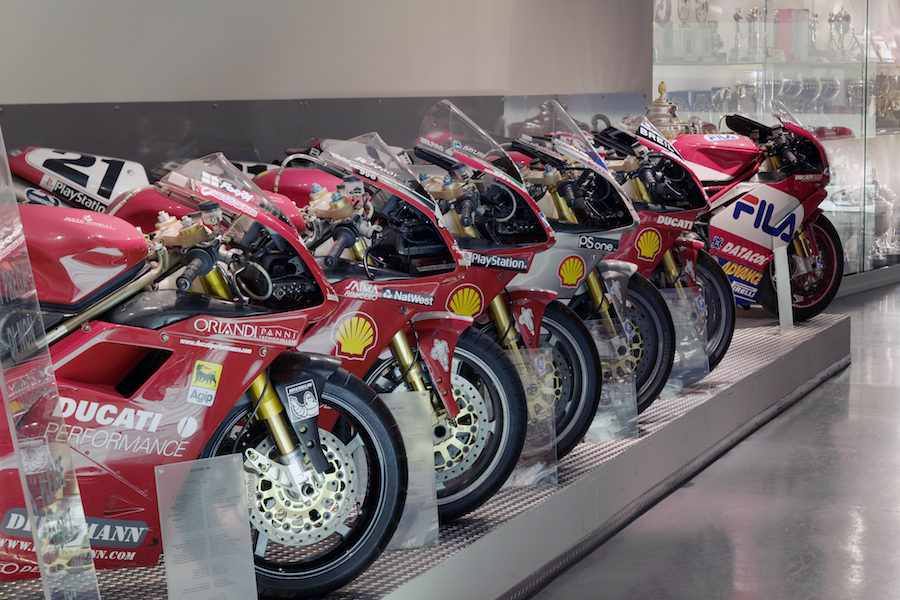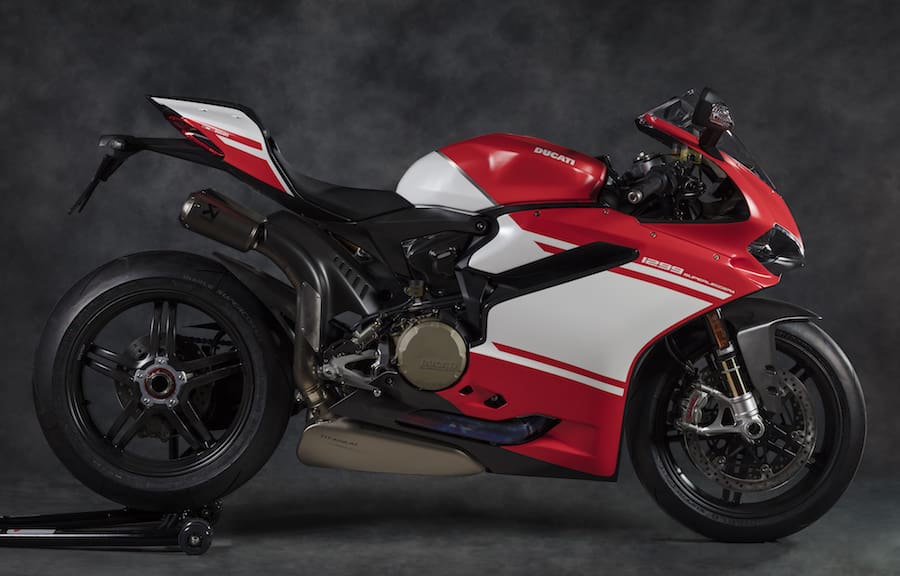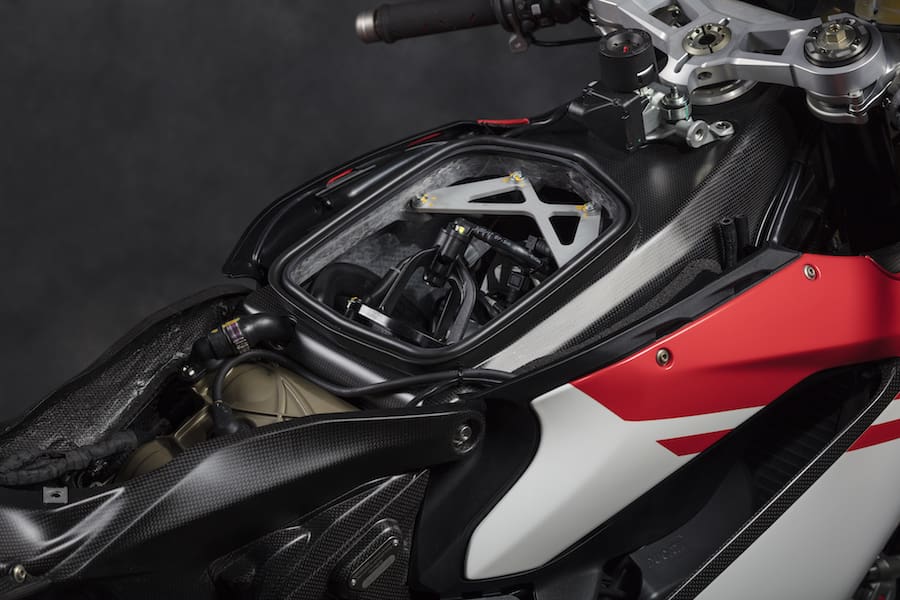Ducati’s ground-breaking 851 superbike was born in a great period of change in the mid-1980s, both for the Italian company and world motorcycle racing. A takeover by Cagiva had brought in new money and a renewed interest in racing. From Dakar-winning Cagiva-Ducatis to dominance in Battle of the Twins and World F1 series, the Italian firm seemed back on track.
But it needed a new, more powerful engine to replace its ageing Pantah-based twins. With the retirement of legendary designer Fabio Taglioni, the spotlight fell on a new team of young lions. Chief among them were Massimo Bordi and Gianluigi Mengoli.
In just a few months, they created the prototype of what would become the world’s most sophisticated production V-twin. Then they flew it to the world’s biggest race for twin-cylinder motorcycles, Daytona’s Pro Twins.
While it retained the Pantah’s 90-degree V-twin layout, its package of liquid cooling, fully computerised fuel injection, DOHC heads and eight valves was new territory both for Ducati and motorcycling’s mainstream.

However, what fronted at the Florida speedbowl in early 1987 resembled a backyard build. Electrical cables looped clumsily through the frame, and hoses stuck out at odd angles. The tank even looked like it had been yanked off Cagiva’s two-stroke GP bike.
But the 851cc prototype fitted easily into Daytona’s Pro Twins (formerly BOT) scene. A support event to the famous Daytona 200, it was a hotbed of innovation and a nursery for some of the most creative Superbike racers of the next decade.
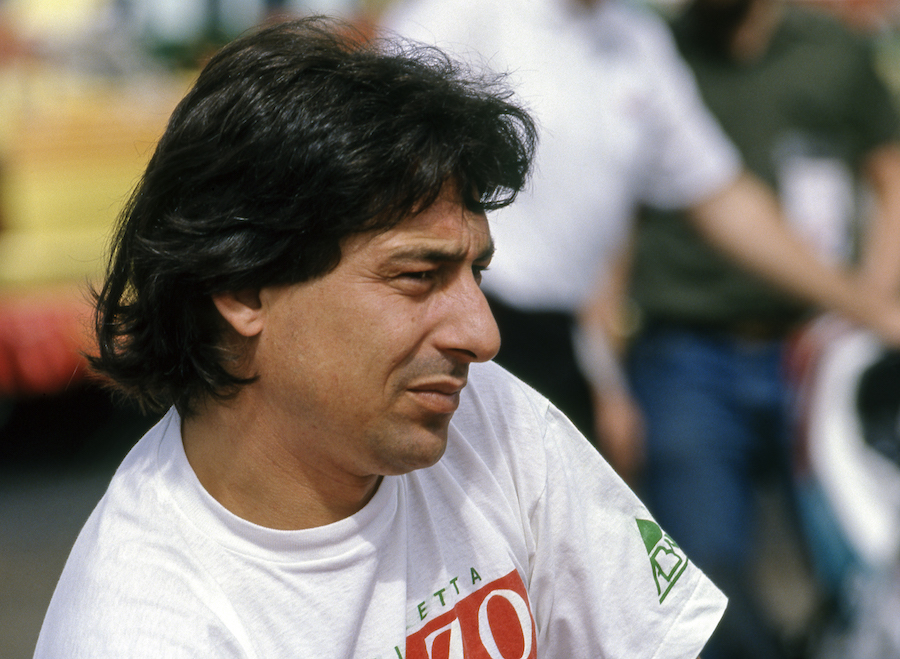
Martin Adams was turning Honda’s ultra-rare flat-track RS750 V-twin into a potent road racer that could exceed 160mph on the banking. In the 1990s he became a major player in American Superbike racing, running the Camel and Smok’n Joe’s Honda teams. The Erion brothers were doing similar things to a humble Honda Hawk V-twin. They would go on to form Two Brothers Racing, one of AMA’s top performance shops.
After tuning Rob North-framed Triumph triples for Daytona’s vintage races, Eraldo Ferracci switched to the Pro Twins class. A few years later he would team with Doug Polen and deliver Ducati two World Superbike titles. Then there was John Wittner, whose homebuilt short-stroke, four-valve Moto Guzzi would revive the factory and help refocus its model range. Soon John Britten would arrive, with various versions of his V1000.
The clean-sheet Ducati was so new it didn’t even have a name. Its technicians referred to it as the 4V (a reference to its four valve heads).
The fact that 1981 world 500cc champion Marco Lucchinelli was riding it meant Ducati was taking this race seriously. ‘Lucky’ had easily won the BOT race the year before on the ultimate version of Ducati’s TT-F1 air-cooled twin. This year he faced several TT-F1s and a host of home-brewed but devastatingly fast twins.
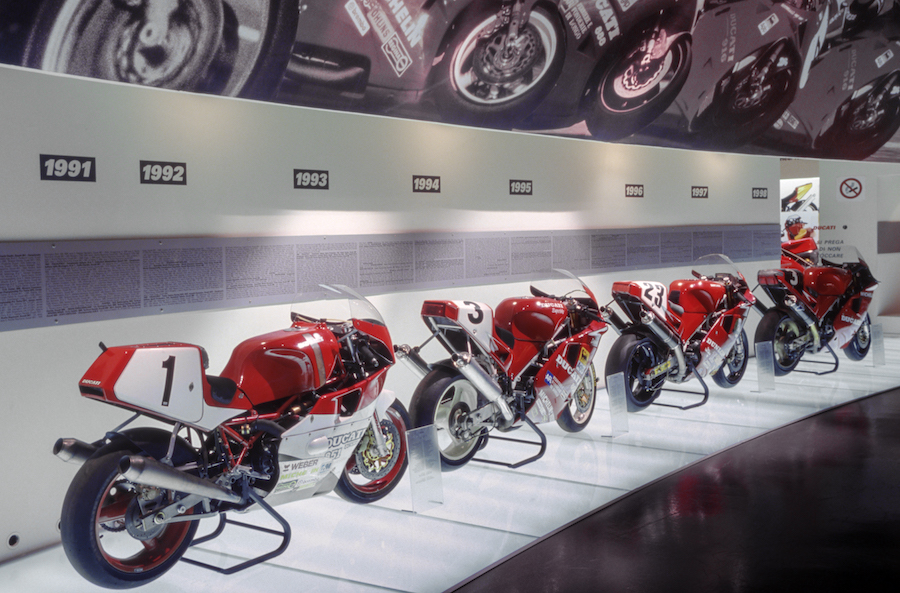
Proof of concept
The so-called 4V was a highly developed version of the experimental racer codenamed 748 IE, which had lasted 15 hours of the 1986 Bol D’or 24-hour race. Based on air-cooled Pantah crankcases, this unheralded and largely ignored entry had proved the design was worth developing.
The engine was boosted to 851cc, fitted into special crankcases and dyno-tested for over 100 hours. Fuel injection meant Ducati could increase intake size from a maximum of 42mm using carburettors to a starting point of 50mm. And using components sourced from nearby Weber Marelli meant F1 car technology was available. The result was a world-first computerised and fully mapped injection system.
Before the race, Lucky played down his chances, saying his bike “only had 850cc” against mainly 1000cc opposition. Among them was the UK-built Quantel Cosworth ridden by Rob Phillis, and Harley’s one-off short-stroke XR1000 housed in an Erik Buell frame and ridden by reigning American Pro Twins champion Gene Church.
Phillis didn’t front the starter after the bike failed in practice, and Church’s race lasted one lap before he speared off the track trying to outbrake Lucchinelli. Then the Italian was challenged by Stefano Caracchi, on an 850cc version of Ducati’s air-cooled F1. Lucchinelli lost the lead when his bike appeared to falter but he got ‘lucky’ when the race was stopped next lap due to an oil spill. He was declared the winner.
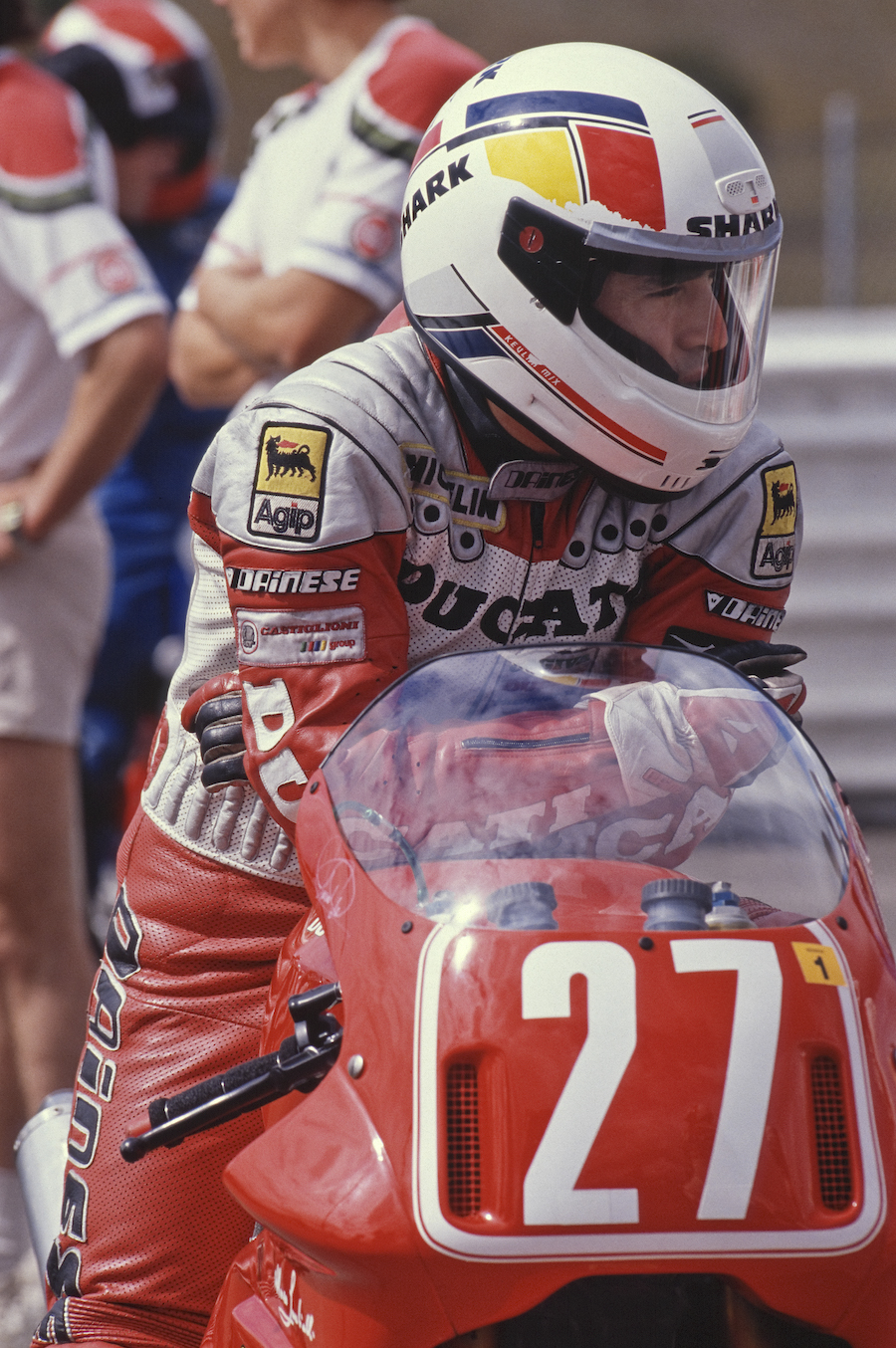
What really created interest was the bike’s top speed and lap times. Officially clocked at 165mph (265km/h), it was just 10km/h slower than the fastest four-cylinder in the 200-mile race for
750cc four-strokes.
Back in Italy, the Daytona prototype continued as a mobile test bed, raced in local events while the production 851 was developed. It was cleaned up to take pride of place beside the road-going 851 Strada unveiled at the Milan Show in November 1987.
So the version you see on display in Ducati’s museum now has 851 on its fairing, twin exhausts and many other subtle differences to the Daytona winner. But this is where the legend began.
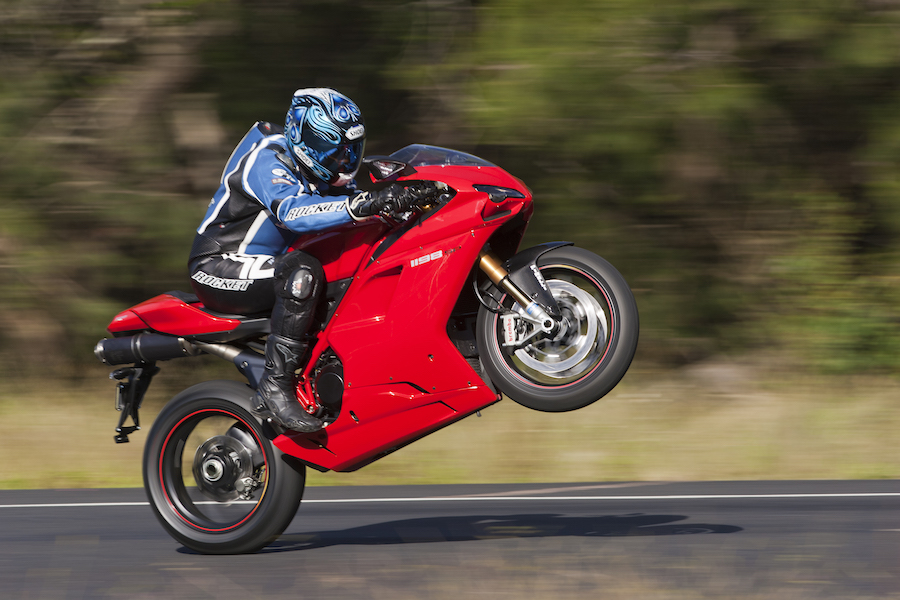
WorldSBK & the 888
In little over a year, Ducati’s 851 had gone from working concept to production motorcycle. Now the factory targeted the inaugural Superbike World Championship as the perfect showcase for its new flagship model. No other major motorcycle company has relied so heavily on racing success for sales as Ducati. So much was hanging on this first Superbike season.
In early 1988, Ducati produced 300 of the 851 Stradas, with a heady price tag of $25,000. It also quickly produced 200 race-kitted versions to meet homologation requirements. In a time when four-cylinder engines housed in beam-alloy chassis seemed the only way forward, the 851 was an oddity. It was the only bike on the grid with a V-twin engine and ‘birdcage’ tubular-steel frame.
But Lucchinelli gave the 851 a win on debut at the first WSBK round at Donington in April. After finishing second behind Bimota’s David Tardozzi in Race 1, he took the flag in Race 2 ahead of eventual series winner Fred Merkel (Honda RC30). Lucchinelli followed that up with another victory three rounds later at the A-Ring in Austria.
Despite these early wins, the factory only raced at selected rounds and didn’t come out to the final two, in Australia and New Zealand. Ducati finished fifth in both the riders and manufacturers points tables.
Interestingly, there was a Ducati racing at the Oran Park round – Robert Slaytor’s Saftune-sponsored S2 Mille bevel twin, which retired in both races. Over in New Zealand, Kiwis Glenn Williams (10th and 8th) and Mike King (12th and 15th) raced locally owned 851s.
However, Lucchinelli’s racer never really was an 851. Ducati was quick to extract as much power as possible, boring it oversize to displace 888cc. It also used thinner bodywork, lighter frame tubing and weight-saving materials in the engine. Its wheels were 17-inch while the road-going 851 Strada ran 16-inchers. So Lucchinelli’s was the only competitive 851 Ducati in the first year of WSBK, but that all changed in 1989.

Lucchinelli became team manager, with Cagiva GP racer Raymond Roche his main rider. Roche finished the season in third place with five wins. Ducati ended up third in the manufacturers table, helped by fellow team riders Baldassarre Monti and Massimo Broccoli, with Lucchinelli himself pulling on the leathers for a couple of rounds to earn 13 valuable points.
This time Ducati contested the final two rounds, bringing two bikes out to Oran Park and Manfeild for Roche. He finished fourth in Race 1, which was won by Peter Goddard, and second in Race 2 behind Michael Dowson. The next best Ducati finisher was Aussie Graeme Morris in 10th on a Fraser Motorcycles 851. Roche failed to finish both NZ races.
Season 1990 was the breakthrough year for Ducati. The Frenchman was joined by spectacular young Italian Giancarlo Falappa. Roche went on to win the title while Falappa rode to 11th place with his lurid and fearless race technique.
Roche qualified a disappointing 10th at Phillip Island and finished the races in fifth and eighth. He qualified fifth at Manfeild and was second in the first race but retired with engine problems in the second after recording the fastest lap.
Roche’s series win came despite strong challenges from Yamaha, Honda and Kawasaki (Rob Phillis), and Ducati finished only 13 points behind Honda in the manufacturers title.
The factory had raised the stakes in 1990, releasing the first of the true race-replica Corsa range. Although nominally an 851, this bike displaced 888cc and featured race internals and stronger crankcases. The base-model 851 gained a twin seat, while over the next few years various limited editions of the Corsa or SP range brought more of the racing technology trickling down to the buying public. Ducati’s superbike was now a viable option for racers around the world.

However, many new owners struggled with the wide-ranging suspension and steering adjustments available, while the engine also required intense maintenance. One issue that blighted the early racing success of the 851-888 racer was its fragile crankcases, often failing to last a full race weekend.
But season 1991 was the start of Ducati’s decade of dominance. Doug Polen arrived with American supertuner Ferracci in a satellite factory team and won the championship by a staggering 150 points. Roche finished second ahead of Kawasaki’s Rob Phillis. Ducati also won the manufacturers title, by more than 100 points, with five Ducati riders finishing in the top 10.
It was a similar result in 1992, but when Polen was sent back to win the AMA title for Ducati in 1993, it lost the world championship but retained its manufacturers title.
However, new signing Carl Fogarty had recorded 11 race wins on the ultimate development of the 851, now heavily developed into a 926cc powerhouse. By now even the production version of the Superbike was called an 888 (the SP4 of 1992 was the first Ducati to be officially called an 888). Time had moved on and the next chapter was about to be written.
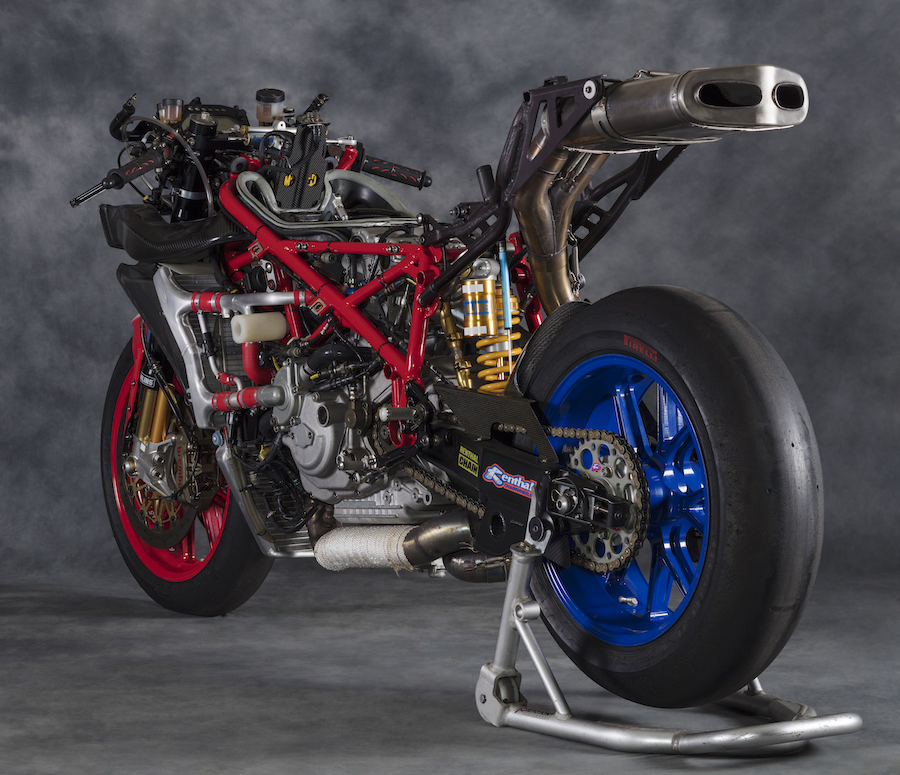
The 916, an instant classic
Very few all-new motorcycles have received the adulation of Ducati’s 916, released in 1994. Described by some as the most significant racing motorcycle since the featherbed Manx Norton of the 1950s, the 916 set new standards of both design and construction.
This time there were no rough prototypes like with the early 851. The computer age had arrived and everything from the engine to the tubular frame, strengthened by the air-intake box, had been mocked up on screen first.
Engine designer Bordi freely admitted he had been influenced by some of the performance theories in F1 car technology, at that time using small turbocharged engines. What was in no doubt was that other innovations, such as the ram-air-intake system, were adapted from Cagiva’s two-stroke 500cc GP bike. Bordi made the design guidelines sound simple: “An intake manifold that is as straight as possible, fuel injection, careful study of the exhaust system.”
Although closely based on the now superseded 926, the 916cc engine was a thorough redesign. Its slightly lower capacity was achieved by retaining the 888’s 94mm bore but adding a longer stroke of 66mm. Not only was the 916 more powerful than the 888, it was also 15kg lighter. The 90-degree V-twin engine was also very slightly tilted back in the frame to shorten the wheelbase and quicken the steering.
The man heading the project was Cagiva Research Centre boss Massimo Tamburini, the former co-founder of Bimota. He would go on to pen the MV Agusta F4.
Nothing was spared in the quest for technological excellence. The steering head was adjustable for rake and trail. A single-sided swingarm with stub axle, similar to that first seen on the Honda Elf endurance racer, allowed easy rear chain adjustment and wheel changes. The road model came with a steering damper as standard and the racer had a slipper clutch.
The styling set new standards with distinctive twin angular headlights and underseat exhaust.
With physical dimensions not much larger than a Grand Prix bike and a quality of finish not seen previously on a Ducati, the 916 rocked the motorcycle world.
And Carl Fogarty took Ducati back to the top of the riders championship, making Scott Russell’s win for Kawasaki in 1993 appear a glitch. Apart from John Kocinski’s win for Honda in 1997, Ducati went on to win every riders and manufacturers title for the rest of the decade. The only way Honda could break Ducati’s stranglehold was by building its own V-twin, on which Colin Edwards won the 2000 championship.
Over the years, rules were revised several times to try to bring parity between the big twins and their 750cc four-cylinder rivals. But even weight penalties and restricting the fuel-injection intake size couldn’t hobble Ducati’s winning streak.
True to form, Ducati’s official racebike wasn’t 916 but punched out to 955cc for Foggy’s first year. Then it was enlarged to 996cc for 1995, the year Aussie Troy Corser came second to Fogarty. The following year Corser won the title, with Fogarty winning in 1998 and 1999.
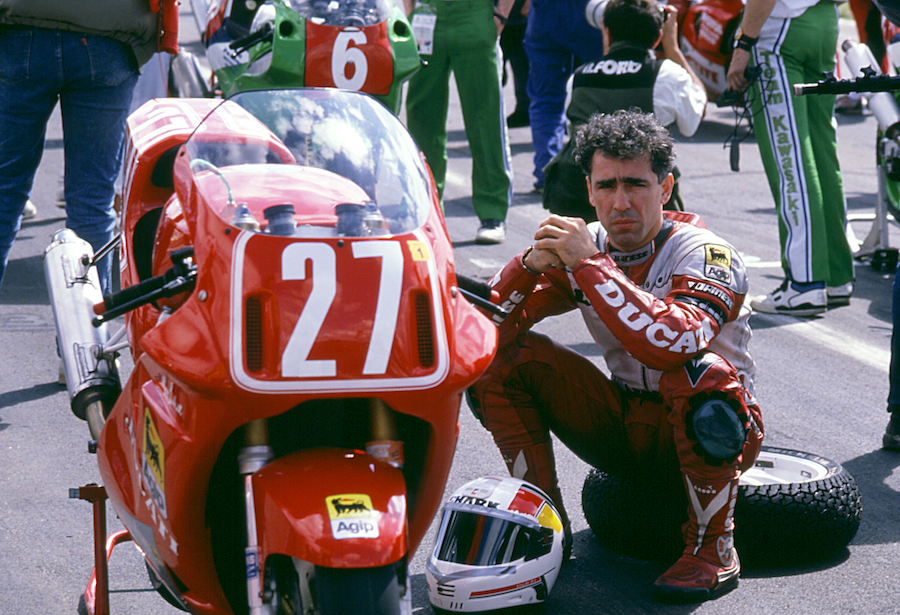
By now it had won more Superbike rider and manufacturer titles than all its rivals combined.
After Fogarty retired through injury partway through 2000, Troy Bayliss stepped in and finished sixth in the points table. He won the title back for Ducati in 2001, the 75th anniversary of the company’s founding.
With both Honda and Aprilia now fielding V-twins, Ducati had pulled another rabbit out of the hat in 2001 with the Testastretta engine. Largely designed by ex-Ferrari F1 engineer Angiolino Marchetti, the Testastretta, named after its narrow valve angles, was a revelation. Over-square with a 100mm bore and 63.5mm stroke, it boosted performance across the rev range and had an exhaust note like no previous Ducati.
Bordi, now Ducati’s general manager, described the engine as “evolution, not revolution”, but the next chapter of Ducati’s Superbike story would change all that.
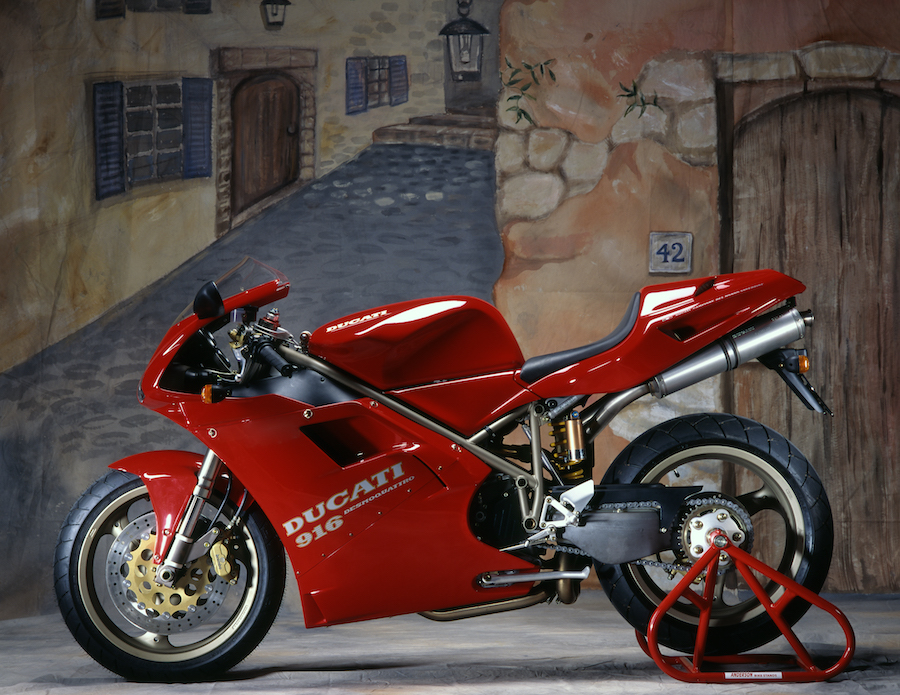
Dial 999 for controversy
Over nearly 10 years, the 916 had been king of cool both on the racetrack and on the street. Now well into a new century, Ducati’s big challenge was to redefine a model that was a cornerstone of motorcycling’s culture.
The 999 was a brave attempt that failed to ignite the showrooms, but blew the WSBK to pieces straight out of the box. Neil Hodgson led a Ducati slaughter of the 2003 championship after the major Japanese factories had diverted their efforts to the new MotoGP class. Ducati riders filled nine of the top 10 in the standings, most on customer bikes. The factory won the manufacturers title by nearly 300 points.
James Toseland led a similar tidal wave in 2004, but the Japanese factories came back with a vengeance in 2005 and Ducati lost its crown. Troy Bayliss returned in 2006 and wrote a Ducati fairytale by winning back the title. Bayliss had now won titles on two different generations of Ducati Superbike.
Unfortunately, it was a different story in the showrooms. Despite producing the most ergonomic, user-friendly Ducati superbike, designer Pierre Terblanche was pilloried by diehard fans. They simply hated the slabby, almost Ferrari car-like styling, the loss of the single-sided swingarm and the stacked headlights. Yet many secretly admitted that this was a much better bike than the 916.
Rule changes in 2003 allowing four-cylinders to compete in 1000cc format gave Ducati a lot of technical headaches. The good news for road riders was performance upgrades over the 999’s five-year model life created some stove-hot homologation versions, starting with the 999R Fila replica celebrating Hodgson’s Monza win in 2003, Ducati’s 200th in World Superbikes. It continued with various S and R versions that resulted in a road-going V-twin that could accelerate from 0-100km/h in less than three seconds and reach a top speed approaching 300km/h.
But the landscape was changing for both Ducati and the Superbike World Championship.
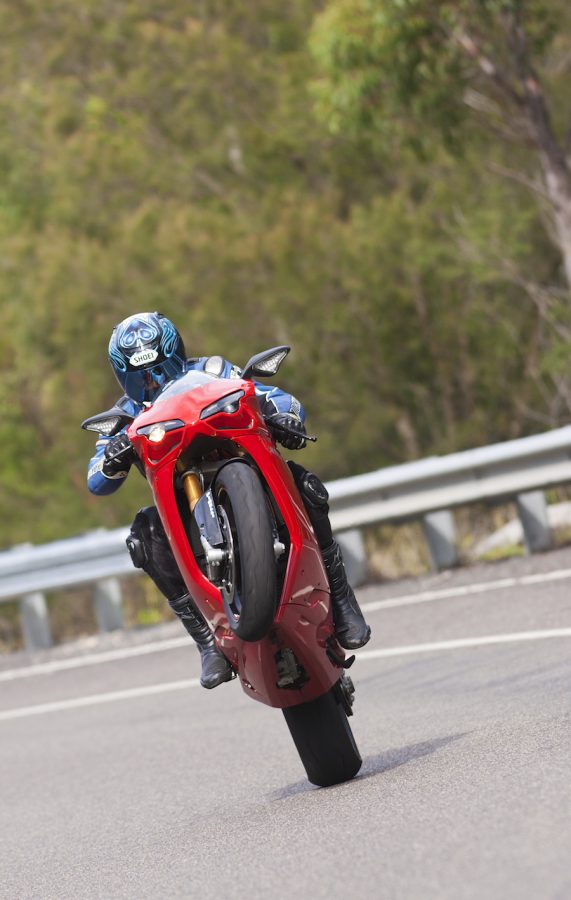
Back to the future with the 1098
Season 2007 was a stellar one for Ducati, with Casey Stoner giving the factory its long-awaited MotoGP title in dominant fashion. But over in World Superbikes, Ducati was being eclipsed by its 1000cc four-cylinder rivals from Honda, Yamaha and Suzuki.
It responded by successfully lobbying for a capacity increase, then built the final version of the belt-drive DOHC engine that had begun with the 851.
Called the 1098, the new bike was powered by what the factory called the Testastretta Evoluzione engine, and if the engine was evolved from the previous 999, the styling was anything but. Everything about it harked back to the much mourned 916.
The single-sided swingarm, horizontal twin headlights and underseat mufflers were modern interpretations of the original classic. In a nod to Ducati’s first 851 Superbike, it was also available in a tri-colour paint scheme.
Happy days were here again, and the sun shone even brighter when Bayliss gave the 1098 a winning debut at the Losail International Circuit. Ducati had now won on debut with the 851, 916, 999 and 1098. Bayliss then backed that up with a double at Phillip Island after setting a new record Superbike lap during qualifying.
Ever-tightening World Superbike rules meant Ducati had to bring major elements of its race bike to the road-registerable R models. This included traction control, which even Ducati’s $100,000 road-going Desmosedici RR didn’t have.
In 2009 the 1198 version arrived with massive 106mm pistons and a compression ratio nudging 13:1. In this model’s final season, 2011, Carlos Checa won the world title and Ducati regained the manufacturers title. It was a fitting way to finish this particular era of Ducati’s Superbike reign that had begun with the 851 back in 1987.
Panigale postscript
Ducati’s next tilt at World Superbike glory came with the 1199 Panigale.
To create the world’s most powerful production twin-cylinder motorcycle, the factory changed its Superbike DNA. The tubular frame was replaced by alloy and carbon fibre, gears now drove the double-overhead cams rather than rubber belts. There were no underseat exhausts, and the shock absorber was mounted along the bike.
The Panigale joined the Superbike fray in 2013 and was followed by the ultimate street V-twin, the 1299 Superleggera.
Now the game is changing again, with Ducati building its first V4 Superbike. The stakes are high, as Ducati has struggled in recent years to recreate the glory days that began with the original 851 Superbike. But history suggests you would be wise to bet on red.
